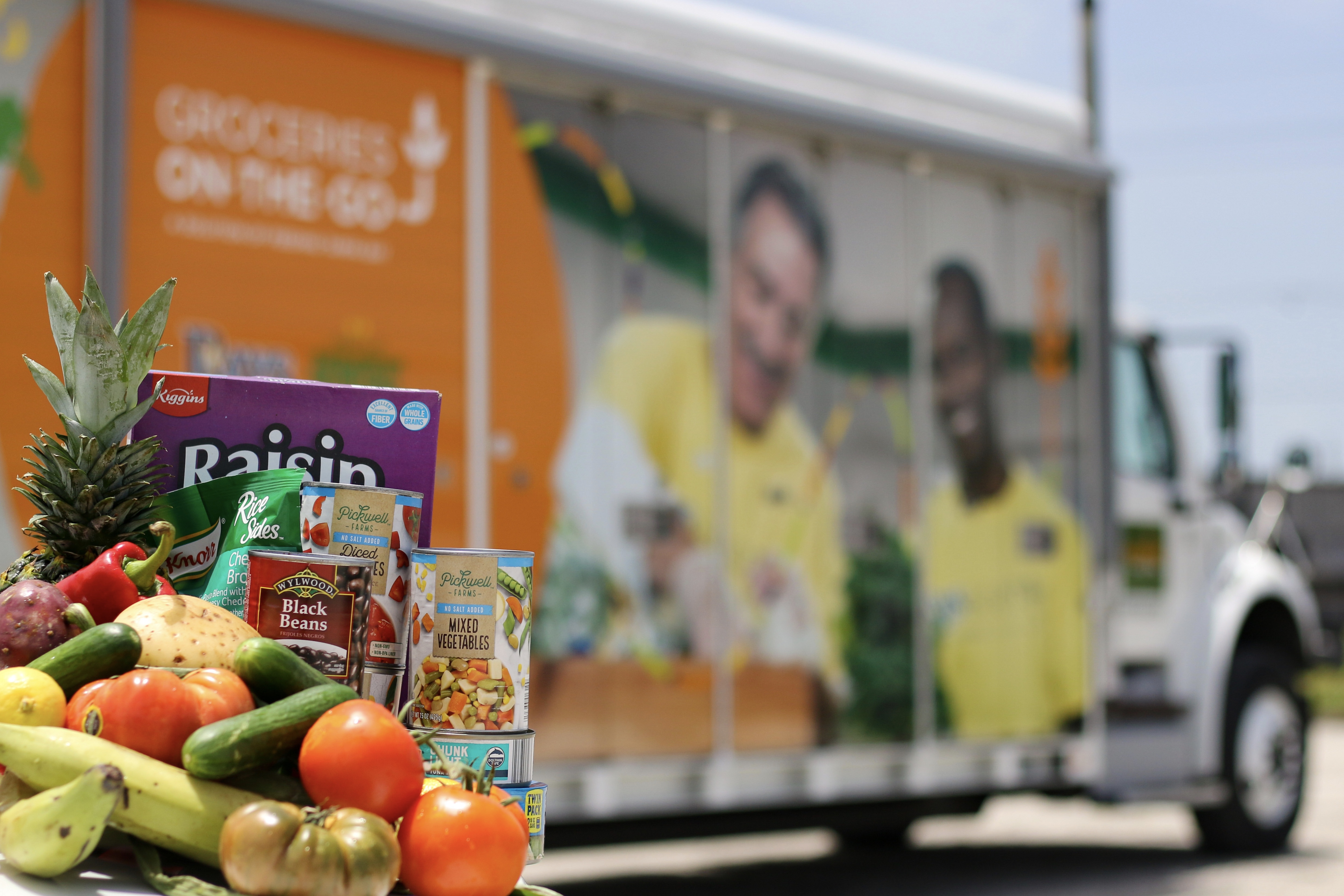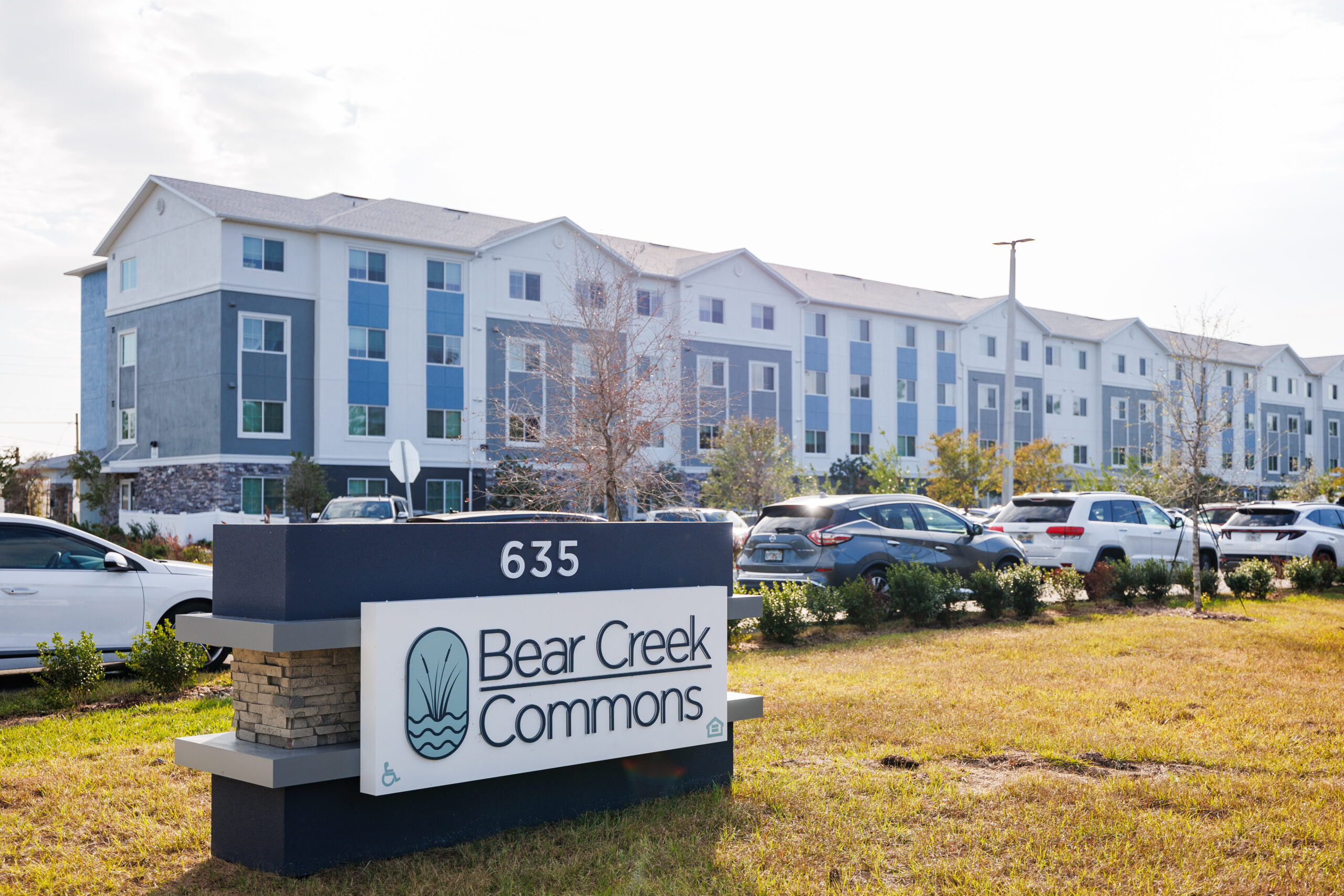Food-insecure families want the same things on their tables everyone else wants – cereal, milk, pasta, chicken, or tuna.
As food banks ramp up for the holidays, they are dealing with supply chain shortages and having to pay for food for the first time ever, since many donor stores do not have as much excess as they would typically have to give.
“People are hungry every day of the year,” said Thomas Matz, president and CEO of Feeding Tampa Bay, now serving about 1 million individuals in a 10-county area, including Pinellas and Hillsborough Counties. “What happens is our community just becomes more aware of food insecurity much more this time of the year, which we think is great, since so many people still need our support.”
People often ask what they can donate, and it is the same items every time, Mantz said. It is peanut butter, pasta and pasta sauce, cereal and other “stable shelf” foods. What Feeding Tampa Bay seriously lacks is enough protein for the families struggling with food insecurity. “That’s canned chicken, tuna or the bean family.”
It is important to keep the community involved in the effort, Mantz said. “We also want to make sure every single day of the year people have healthy food on the table.”
When donor stores like Publix, Walmart, Tyson Foods and General Mills run low on stock, they have less to donate to food banks.
“They always come and go, and we typically get the excess,” Mantz said. “When there is a tighter supply chain, we get less donated to us.” And it is not just food. It is paper towels, toilet paper, soap and pots and pans. “Families are struggling with how to make their household budgets.” Skyrocketing rents in the Tampa Bay region have exacerbated the problem.
And with food prices going up, there is no end in sight for the food insecure. The price of food rose more in September than in any month since the pandemic began, according to the U.S. Bureau of Labor Statistics. Beef is up 17%, and prices for other staples such as cheese, fish, eggs and poultry are also up.
There is also a backlog for setting up new school pantries due to a lack of refrigerators and freezers for storage – items also affected by the supply chain issues plaguing the entire world since the COVID-19 pandemic began.
Ships are sitting offshore, unable to deliver their goods to ports and there is a nationwide shortage of truck drivers to deliver those goods to stores across the country.
And while those who can afford it have their refrigerators and pantries stocked full, many in Florida do not have the means to do that.
Paying for food is another issue for the food banks. “We’ve had to overcome gaps in the supply chain,” Mantz said. “We have traditionally relied on almost exclusively, donated goods. For the first time in history, we are purchasing food when we have a lot more people in our care.”
While many who knocked on the door at the height of the pandemic are back on their feet, many others still are not. At the height of the pandemic, Feeding Tampa Bay supported 1.4 million. It has dropped to 1 million but is still up from the typical 600,000 the organization serves.
“It’s one in four children and one in seven adults now facing food insecurity,” Mantz said. “We could use more support because we have more folks in our world. It goes as far as our donors take us. Most all of our funds come from folks in the community. We could definitely use more help.”
According to Data U.S.A., 14.6% of Hillsborough County’s 1.4 million population falls in the poverty category, higher than the national average of 12.3%. That is 204,000 individuals. The largest demographics living in poverty in Hillsborough County are first, females 25-34, then females 18-24 and females 35-44.
In Pinellas County, according to Data U.S.A., 12.2% of the population live below the poverty line, slightly lower than the national average. The largest demographics there are first, females 55-64, then males 55-64 and females 25-34.
As a volunteer-based organization, Feeding Tampa Bay could use more hands to help at its warehouse, as well. “We have shifts six days a week,” Mantz said.
Metropolitan Ministries, which distributes 2,500 food boxes each week to zip codes with the highest levels of poverty, also needs help. It expects to serve up to 33,000 people this year for Thanksgiving and Christmas.
To learn what to donate and how to donate, visit the websites for Feeding Tampa Bay and Metropolitan Ministries.




























